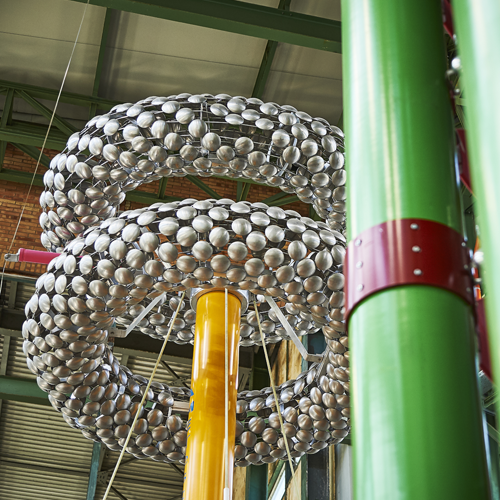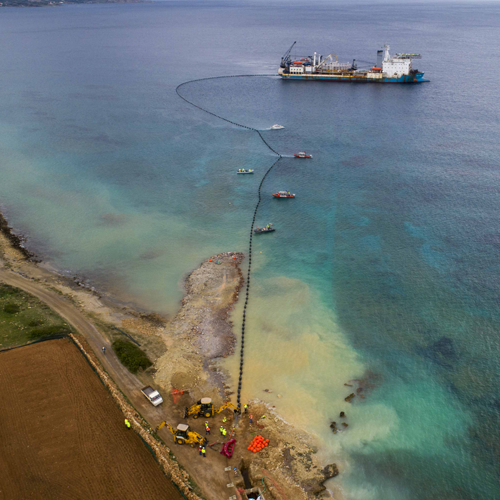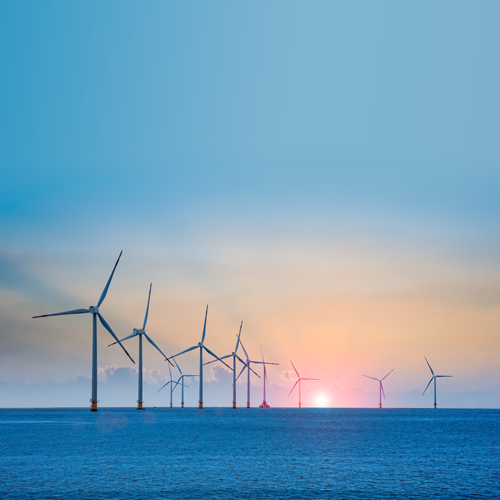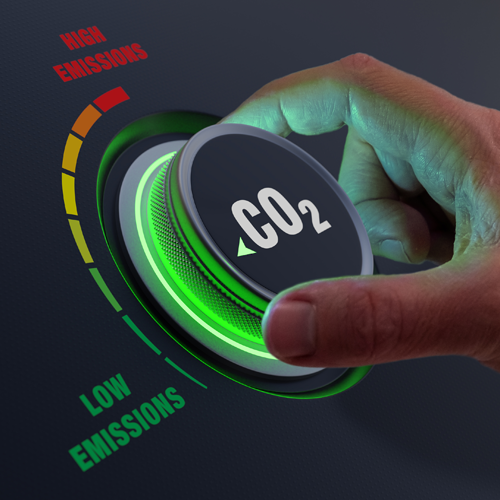Prysmian R&D effort in reducing CO2 emission
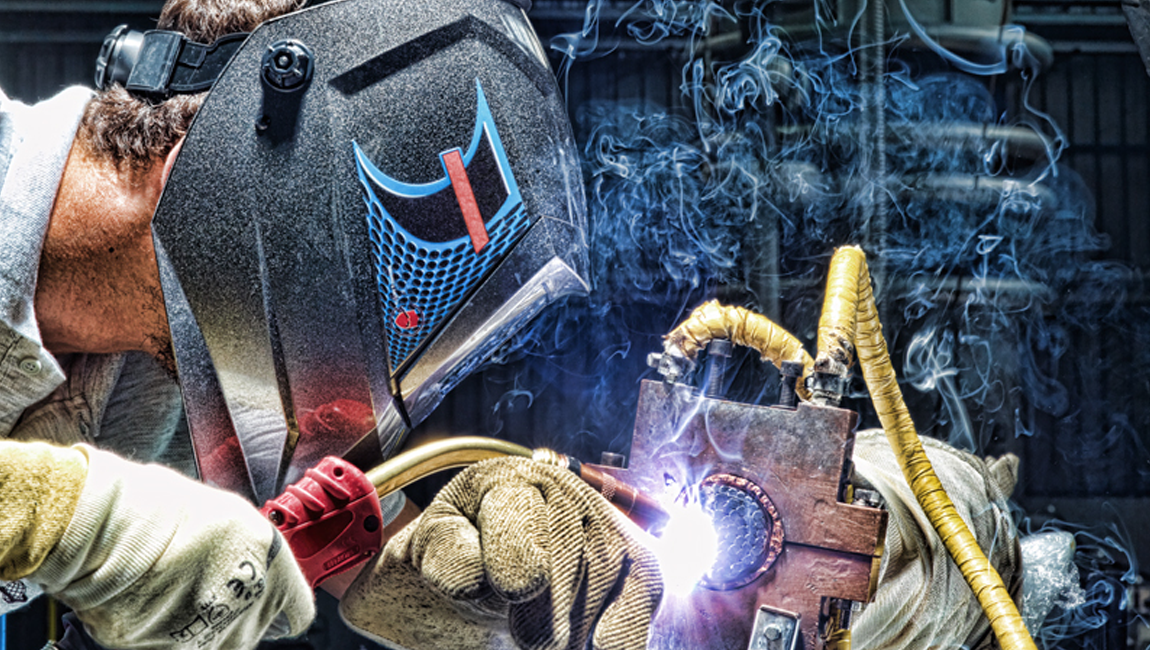
Whether through long-term projects to invent lighter, eco-friendly lead-free cables, installing completely recyclable P-Laser cables that are setting new industry standards, or developing dynamic cables that can adapt to tomorrow’s floating wind farms, innovation for Group Vice President R&D for Projects BU Stefano Franchi and his staff is increasingly about sustainable engineering solutions to effectively contribute to the energy transition.
Moving towards lead-free cables in 2025
Prysmian’s decade-long effort to engineer a more sustainable cable for the energy transition came to fruition last year with P-Laser cable technology, being selected for two out the three awards for the German Corridors’ energy projects, consisting of three ±525 kV underground DC cables systems. These massive three-part interconnectors deliver clean electricity from the North Sea region - where clean wind energy is generated - to cities and factories hundreds of kilometers away in the south - where energy is consumed. Prysmian will supply 2,300 kilometers of energy cables, representing around 44% of the total amount. Of that, 1,200 kilometers will be the P-Laser, the first 100% recyclable, eco-sustainable and high-performance cable technology.
“We are proud to install P-Laser in the German Corridors projects,” said Group Vice President R&D for Projects BU. “P-Laser pioneered a recyclable polymer that substitutes the old vulcanized material, which had a higher CO2. Few year ago, we contributed in setting industry standard with thermoplastic, which is now being used everywhere in Italy, in the Netherlands, in Spain and other European countries. P-Laser is a new technology and soon or later it will become an industry must.”

Stefano Franchi
Group Vice President R&D for Projects BU
P-Laser is the first 100% recyclable, eco-sustainable, high-performance cable technology based on HPTE (High Performance Thermoplastic Elastomer). With a solid history in MV application, this is a fully qualified high-performance insulation system that has evolved over the years in a comprehensive HVDC development program of rigorous testing and extensive trials. P-Laser is suited for the highest voltage levels delivering enhanced thermal performance and high intrinsic reliability that enable more flexible and sustainable solutions, such as optimised construction with reduced trench widths. It is fully recyclable, and with increased productivity and 30% lower CO2 emissions in production, has much higher environmental credentials compared to more conventional technologies.
Making all of Prysmian’s cables eco-friendlier is a key goal for Prysmian’s R&D team, who has been working hard on the ‘Lead Less’ technology, which eliminates the need for lead in energy cables. In the meanwhile, we also worked to replace steel armour for submarine cables with a lighter and more sustainable synthetic material. This effort paid off in September 2020 when Prysmian’s high depth submarine technology ±150 kV three-core submarine cable with synthetic armour was successfully installed at a water depth of nearly 1000 meters, connecting the Greek mainland and the island of Crete.
As a market recognition, this project has recently been awarded as the “2020 Infrastructure Project”, and recognised as the “project of records”, thanks to the innovative technology employed and to Prysmian’s expert installing capabilities. This is an important technology and sustainability milestone. The synthetic armour makes the three cores submarine cable 30% lighter and single core submarine cable in water up to 50% lighter, enabling Prysmian to perform ultra-deep installations in marine ecosystems previously considered impossible.
This cable is now available and planned to be installed in a real project at up to 3,000 meters within a couple of years.
“A few years ago, we promised we would have a synthetic armour, and now we have it. We will do the same with lead, removing it from the cable completely. We have set this target for2025, it is not simple, but we are headed there.”

Stefano Franchi
Group Vice President R&D for Projects BU
To increase products sustainability while reducing their CO2 impact, metal sheaths are being more and more replaced by other materials. But replacing metals as a conductor would be a big leap forward for sustainability in the cable industry. The result will be lighter and more sustainable cables that are also easier to install. That could take decades to be fully achieved, but Prysmian is already moving in that direction.
Another important R&D focus in terms of sustainable projects is the development of dynamic high voltage cables that can be used for floating offshore wind farms that are expected to become increasingly common in the coming years. Indeed, floating offshore wind platforms can be installed farther from shore, where wind flow is more abundant and constant, maximising the energy flow.
“Our goal on R&D is to work on projects that are increasingly sustainable. Our innovation is targeted at reducing CO2 and if the product doesn’t head in that direction, we don’t get started. That is our guiding principle”

Stefano Franchi
Group Vice President R&D for Projects BU
To accelerate the race to net-zero CO2 emission, Prysmian has planned to invest around 450 million euro by 2022 to further improve the sustainability of its organization and supply chain and to accelerate the development of advanced cable technologies as well as assets and services.
Besides investing in sustainable cable-system solutions that contribute to enabling the energy transition, Prysmian Group is entirely committed to reduce CO2 emissions, and encourages company-wide responsible behaviours, for example:
- Starting from January 2021, all Prysmian Group’s new company cars in Italy will be exclusively plug-in hybrid models, full electric or LPG, reducing the CO2 emissions of our fleet as part of our goal to become carbon neutral. The programme will be rolled out to all regions where the Group operates.
- Prysmian HQ in Milan, a state-of-the-art Lead Platinum Certified building, paperless and plastic-free, keep leading with examples on the ‘green’ journey and being the Group sustainability flagship.
- Prysmian aims in 2022 to have 50% of sales coming from what we consider “low-carbon products”, including high voltage energy and submarine cables. We aim to increase this share and are spending over three quarters of our R&D budget in this area.





